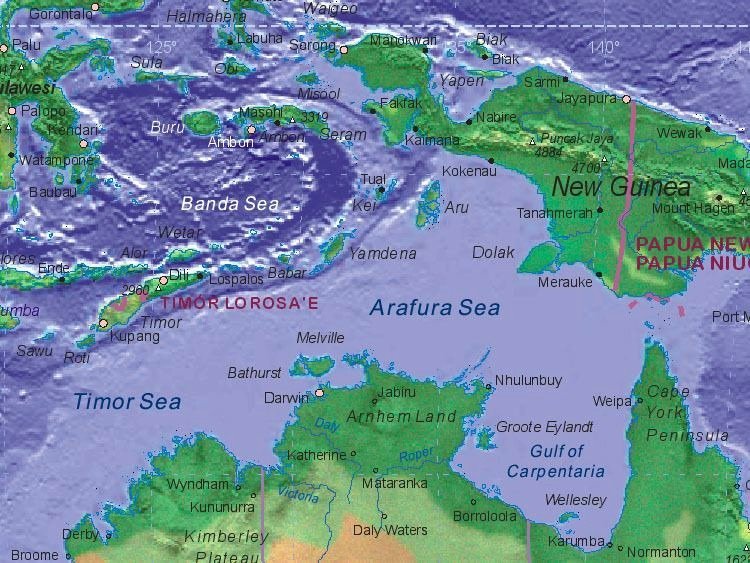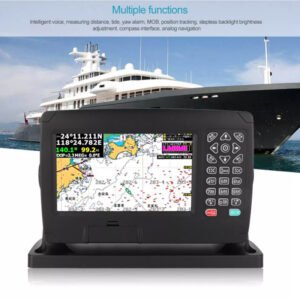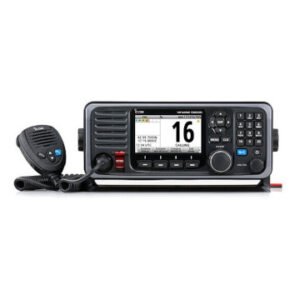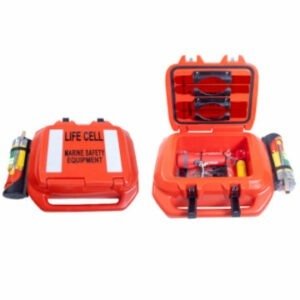Darwin Ocean Currents Interactive Live Map

Detailed live interactive ocean currents map and up to date information for sailing & fishing in Darwin, Northern Territory, Australia.
For planning only – not suitable for navigational purposes
Navigating Darwin Ocean Currents: Essential Tools and Safety Tips
Understanding Darwin Ocean Currents
Ocean currents are large-scale flows of seawater that move across the world’s oceans, transporting heat, nutrients, and marine life. In the context of the Darwin region, the currents in the Timor and Arafura Seas play a significant role in maritime activities such as sailing and fishing. These currents can influence navigation, weather patterns, and the distribution of aquatic species, necessitating an understanding of their characteristics for those venturing into these waters.
In Darwin, the ocean currents are characterized by their complex patterns, which can be affected by various factors including wind direction, tidal influences, and seasonal changes. The region experiences a tropical climate, leading to marked variations in ocean current behavior throughout the year. During the wet season, which typically spans from November to April, the influence of monsoons may alter the strength and direction of the currents, while the dry season can lead to different patterns of flow.
For yacht owners and fishermen, comprehending these currents is essential for safe and effective navigation. A thorough understanding of the ocean currents around Darwin can help avert potential hazards, such as sudden shifts in water movement that might complicate sailing or fishing conditions. The interaction between currents and local topography can create areas of turbulence or calm seas, which are vital to consider when planning outings.
Moreover, the seasonal variations in the currents can affect the availability of fish species, making the timing of fishing trips crucial to ensure success. Adapting one’s strategies based on current patterns not only increases efficiency but also enhances the overall experience on the water. Thus, an informed perspective on the ocean currents of Darwin is indispensable for making the most of maritime adventures in this unique and dynamic region.
Using Navigational Tools Effectively
Navigating the waters of the Northern Territory, particularly around Darwin, requires a blend of modern technology and traditional navigational skills. Essential tools such as GPS, VHF radios, and compasses play a crucial role in ensuring safe passage across potentially treacherous currents. While contemporary tools like the Darwin ocean currents interactive live map provide a wealth of real-time information, relying solely on digital solutions can lead to vulnerabilities, especially when technology fails or is unavailable.
A Global Positioning System (GPS) is an indispensable tool for sailors, offering precise location data and enhanced route-planning capabilities. However, as effective as GPS is, it is critical to complement it with older navigational methods. A handheld compass, for instance, serves as a reliable backup, helping sailors understand their heading in low-visibility conditions or during malfunctions in electronic systems. Sailors should commit to regular practice with their compass, ensuring they can navigate without reliance on technology.
Vital Marine Equipment
Another vital piece of equipment is the VHF radio, which not only allows for communication with other vessels but also provides access to important weather updates and emergency information. Understanding the proper usage of VHF radios is essential for safe navigation. This includes familiarizing oneself with marine communication protocols, such as channel selection and emergency frequencies, to ensure timely responses in critical situations.
Incorporating these tools into regular sailing practice requires developing a systematic approach. Sailors should establish a routine to check their navigational equipment before each voyage, ensuring that their GPS is functioning correctly, their compass is calibrated, and their radio is operational. By blending traditional navigation techniques with modern tools, sailors can enhance their awareness of surrounding conditions, leading to safer journeys across Darwin’s diverse waterways.
Safety First: Essential Safety Products
When embarking on a sailing journey in the Darwin Ocean, particularly in the challenging waters of the Northern Territory, the significance of having the right safety products cannot be overstated. Ensuring the safety of all individuals aboard your yacht should always be a priority. Key safety products such as emergency beacons, flotation devices, and man overboard rescue systems are crucial to navigating the often unpredictable ocean currents.
Emergency beacons, commonly known as Personal Locator Beacons (PLBs), serve as vital tools in distress situations. These devices can send out a distress signal to search and rescue agencies, significantly increasing the chances of a prompt response in case of emergencies. They are particularly important in remote areas where traditional communication methods may fail. Investing in quality emergency beacons that are registered and regularly updated ensures that assistance can reach you quickly, even in the harshest of conditions.
Flotation devices, including life jackets and life rafts, are essential for any sailor. Life jackets should be worn at all times while on deck, especially when weather conditions are uncertain. They come in various types suited for different activities, so selecting the right one for your sailing type is crucial for maximum protection. Additionally, a reliable life raft is an important safety product that can provide refuge in the event of a vessel capsizing or other emergencies.
Man Over Board
When it comes to man overboard situations, having a robust rescue system in place is vital. This may include throwable flotation devices, lifelines, and even advanced recovery systems that can aid in quickly retrieving individuals who have fallen overboard. Regular drills and training on how to use these products can further enhance safety and preparedness.
In conclusion, equipping your yacht with essential safety products such as emergency beacons, flotation devices, and man overboard rescue systems is imperative for any sailor navigating the Darwin Ocean currents. Safety must never be overlooked, as these tools are critical in ensuring a secure experience in the challenging waters of the Northern Territory.
Fishing and Sailing in Northern Territory Waters
The Northern Territory offers a unique and diverse environment for fishing and sailing enthusiasts, particularly around the Darwin region. Understanding the local conditions is crucial for gaining the most fulfilling experience and ensuring safety while navigating its beautiful waters.
Visibility is a key factor to consider when fishing or sailing in the Northern Territory. Early morning or late afternoon provides optimal lighting for both activities, enhancing your chances of catching fish and ensuring clearer navigation. Additionally, the sea temperatures around Darwin can fluctuate significantly throughout the year, typically ranging from a warm 24°C in the cooler months to a balmy 30°C during the warmer season. This temperature range attracts numerous species of fish, making it a prime location for recreational fishing. Local waters are teeming with barramundi, which is the main attraction for anglers. Knowledge of seasonal patterns can help you plan your trips more effectively.
When sailing, it is beneficial to familiarize yourself with local currents and tides. The tidal range in this region can be significant, influencing both the fishing conditions and the sailing experience. Utilizing tide charts can help you identify the best times to set out. The best months for both sailing and fishing typically lie between April and October, aligning with the dry season when conditions are more stable and pleasant.
By integrating this knowledge into your fishing and sailing plans, you can enjoy the rich marine life and captivating landscapes that the Northern Territory has to offer while ensuring a safe and rewarding experience on the water.



